Saint Michael, lithe, elegant and resplendent in gold, looks with calm unconcern at the devil he is about to kill. The beast shrieks in silent terror, its glassy red eyes wide, tongue curling out between serrated teeth, a scaly arm raised in futile defence. In Michael’s polished breastplate is reflected a city of steepled towers: the Heavenly Jerusalem. No one could fail to recognise the mastery of this painting – rich red cloak reflected in gleaming armour, blue veins showing through translucent skin – yet it is perhaps a rare visitor who would recognise the name of its creator: Bartolomé Bermejo.
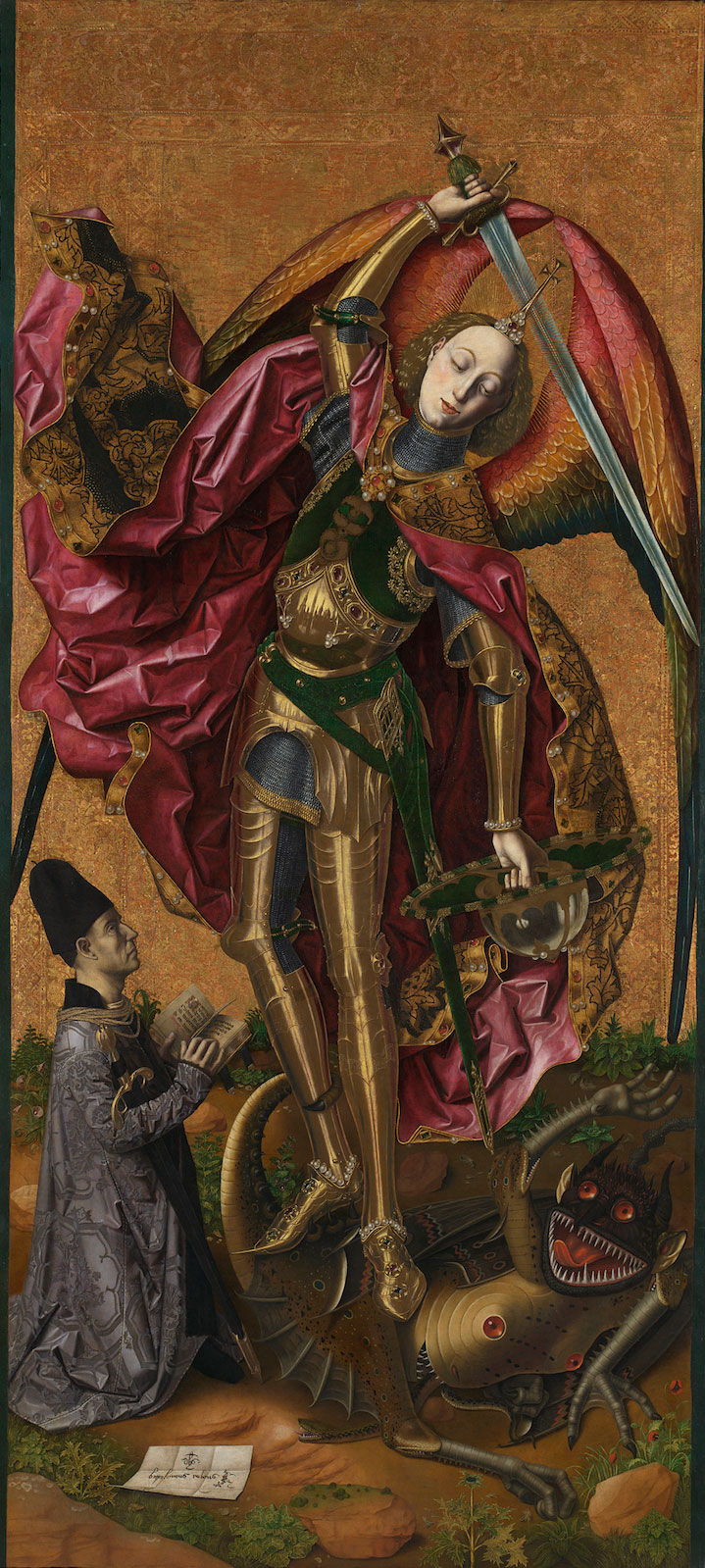
Saint Michael Triumphant over the Devil with the Donor Antoni Joan (1468), Bartolomé Bermejo. © The National Gallery, London
The National Gallery is trying to change this. Following a year-long conservation treatment, Bermejo’s Saint Michael Triumphant over the Devil is the centrepiece of the museum’s exhibition dedicated to the artist, which follows on from the Prado and Museu Nacional d’Art de Catalunya’s 2018–19 show that situated the artist’s work in the context of his peers and followers. In contrast, the National Gallery has opted for a more focused approach uniting Saint Michael with six other works, all firmly attributed to Bermejo, of the fewer than 20 in existence. Acquired from Julius Wernher by the National Gallery in 1995, Saint Michael would have originally stood as the central panel of the high altarpiece in the parish church of Tous, near Valencia. The two complete altarpieces in the show have been lent from the original chapels where they are still used as objects of devotion: the Triptych of the Virgin of Montserrat from the cathedral in Acqui Terme, Italy, and the Desplà Pietà from Barcelona Cathedral. Entering the dark, intimate setting of the exhibition, one feels the holiness of the space. Visitors huddle, entranced, and noisemakers are quick to be hushed.
Bermejo is thought to have hailed from Castilian-controlled Cordoba, a city captured by the Christian king Ferdinand III only two centuries earlier and steeped with Moorish and Jewish history. He was likely a converso – the name given to Jews who converted to Christianity and their descendants. While the Alhambra Decree of 1492 made such conversion mandatory, Jews had been changing their outward allegiance for centuries before this – most to avoid persecution, some in search of employment and a few no doubt for an honest change of belief. Bermejo’s reasons remain obscure but we do know that in 1486 his wife, Gracia de Palaciano, was brought in front of the Inquisition for engaging in ‘Jewish practices’.
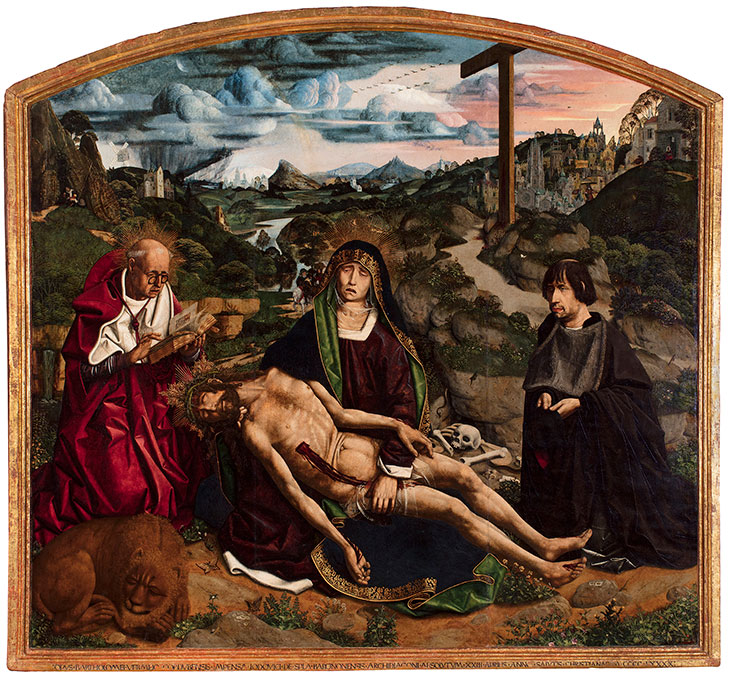
Desplà Pietà (1490), Bartolomé Bermejo. Photo: Guillem F-H; © Catedral de Barcelona
The status of a converso was highly precarious, and this may explain Bermejo’s itinerant artistic career. While he was born in the Kingdom of Castile, all recorded activity is under the Crown of Aragon. He worked in Valencia, Daroca, Zaragoza and Barcelona, and it was likely across these lands – as well as in Cordoba – that Bermejo was exposed to the strong Flemish influences visible throughout his work. He may also have travelled to the Netherlands, a theory debated in the catalogue of this exhibition. Yet despite this mastery of oil painting, textures and atmospheric light, you could never mistake his art for Flemish. The colour contrasts are too strong, the compositions too bold and the figures too sinuous. While no contemporary Spanish artist came close to matching Bermejo in technique, there is still something quintessentially Iberian in the intensity of emotion and power behind these pictures.
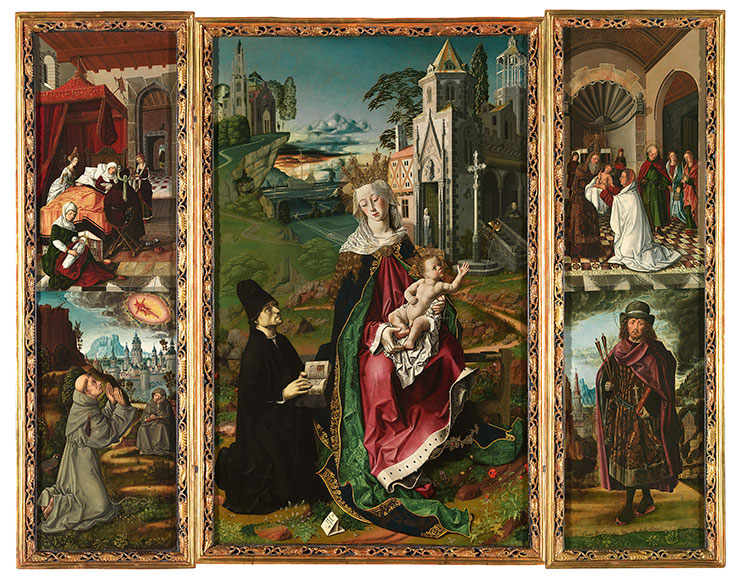
Triptych of the Virgin of Montserrat (c. 1470–75), Bartolomé Bermejo. Photo: Museo Nacional del Prado, Madrid; © Diocesi di Acqui-Cattedrale N. Signora Assunta, Acqui Terme
The two cathedral altarpieces hang as pendants either side of Saint Michael. Both depict the Virgin and Christ with a donor figure, but in other ways they are as night and day. The Virgin of Montserrat is purity personified; so pure in fact that she does not notice the serrated saw-edge on which she sits – an allusion to the Montserrat Mountains. The landscape is lush with highly observed plants and fantastical buildings. Any allusions to future disaster are subtle: the lightning storm on the horizon, the tethered bird. Not so in the Desplà Pietà. Here agony reigns as the mother mourns her dead child. Mary is haggard, weakly clutching the body of Christ. To the left a bespectacled Saint Jerome leafs through his vulgate as if trying to find the passage that explains this tragedy, and to the right the donor Lluís Desplà solemnly looks to his dead saviour.
These paintings are filled with religious symbolism. Yet there is humour in Bermejo’s art too, seen in four panels from a predella depicting Christ the Redeemer. A glum, resigned Lucifer, head in hands, watches on as Christ frees the souls from Limbo. Their genitalia are barely hidden beneath gossamer shawls and a somewhat phallic doorknob marks the gateway to heaven.
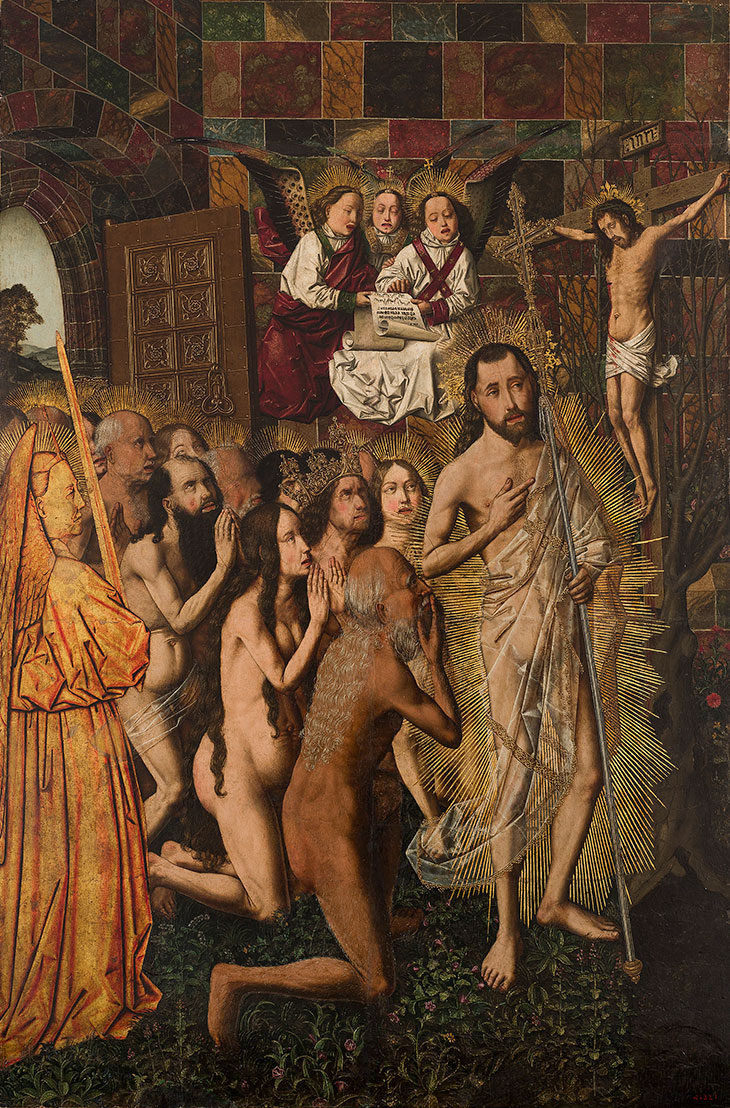
Christ with the Just in Paradise (c. 1470–75), Bartolomé Bermejo. © Museu Nacional d’Art de Catalunya (2019)
So few records of Bermejo survive that every scrap of information is essential. His birthplace is known through an inscription on the frame of the Desplà Pietà, and even his name is a clue – Bermejo means ‘reddish’, so he likely had red hair or a ruddy complexion. To emphasise this rarity of documentary sources, the exhibition displays a notary book from an archive in Valencia, open to the page that holds the first written record of Bermejo’s existence. It notes payment for part of the Saint Michael altarpiece. Looking up at the painting one has to think that, whatever the sum, it was surely not enough.
‘Bartolomé Bermejo: Master of the Spanish Renaissance’ is at the National Gallery, London, until 29 September.
Unlimited access from just $16 every 3 months
Subscribe to get unlimited and exclusive access to the top art stories, interviews and exhibition reviews.

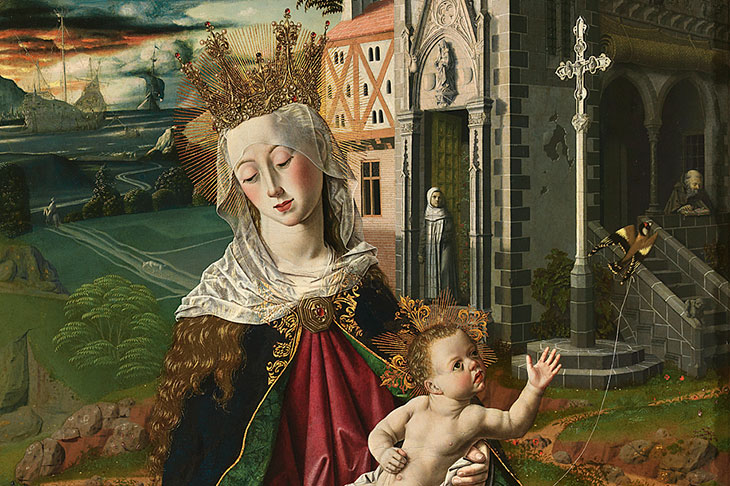
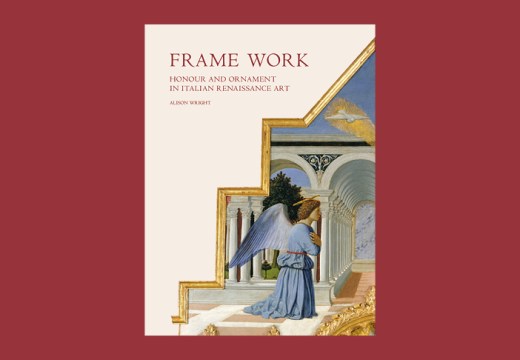
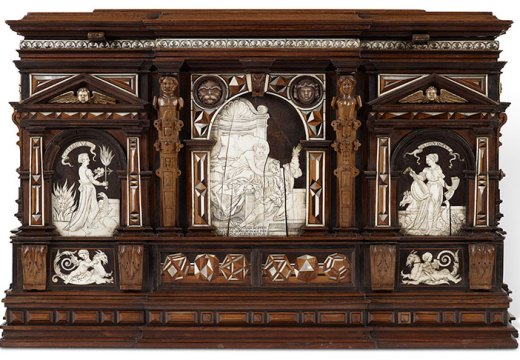
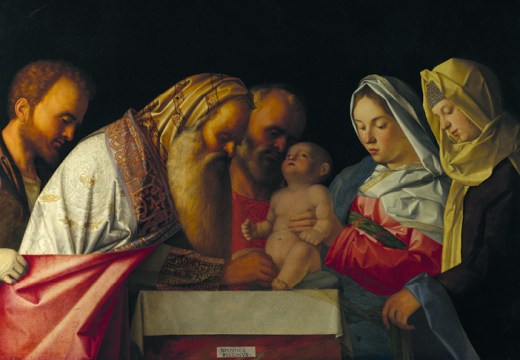









![Masterpiece [Re]discovery 2022. Photo: Ben Fisher Photography, courtesy of Masterpiece London](http://www.apollo-magazine.com/wp-content/uploads/2022/07/MPL2022_4263.jpg)
It’s time for the government of London to return to its rightful home